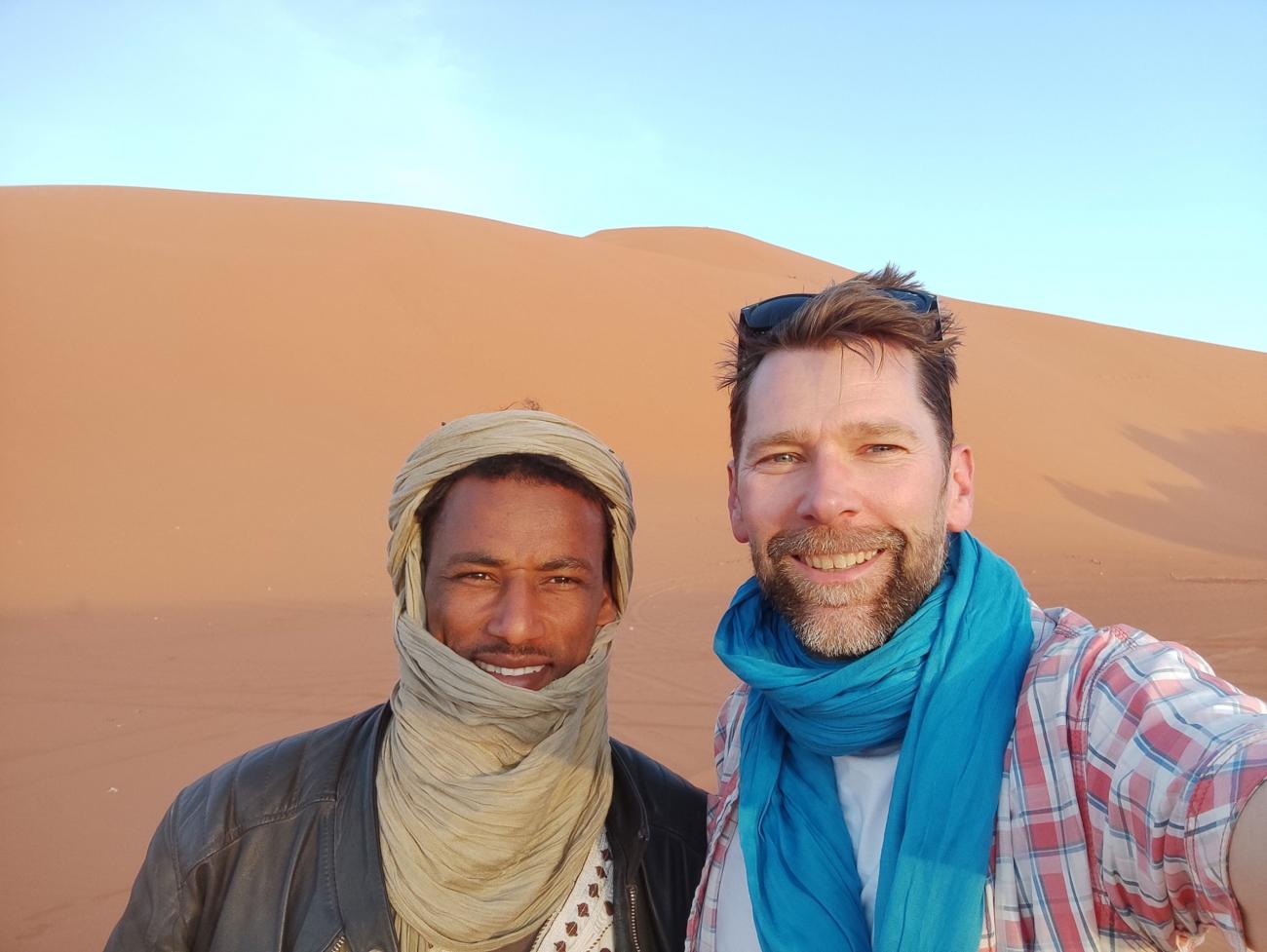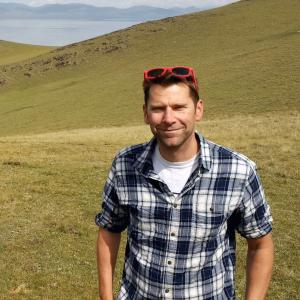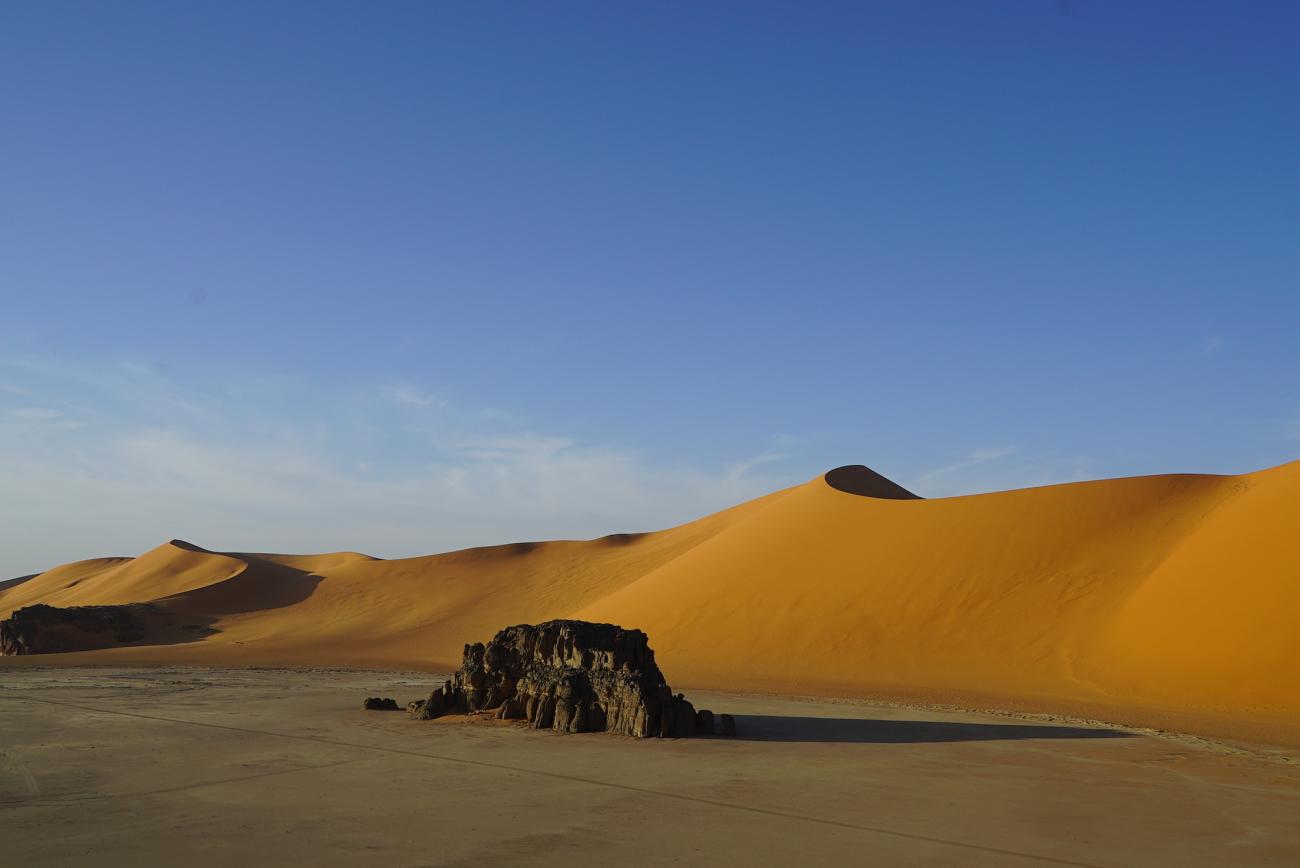
Heading to the heart of Algeria’s Sahara for eight nights of wild camping filled me simultaneously with enormous excitement and, if I’m completely honest, a touch of trepidation.
Excitement because, from the photos I’d seen, the Algerian Sahara looked like one of the most beautiful places on earth. And with no access to wifi, I’d be away from all the stresses and insignificant trivia the modern world flings at you via the 10-inch screens we all carry everywhere.
Trepidation because, well, how comfortable would camping in the middle of the Sahara be? Just 40km from the border with Libya, would that part of the Sahara be safe? And how would I cope without knowing the football scores?
If you’re debating whether or not to visit the remote southern region, here are five reasons I’ll never forget my trip to the Algerian Sahara.
ALGIERS
Friendly Algiers was something of a revelation. Parts of it felt Parisian, with boulangeries, balconied buildings and noisy cafes with outdoor seating. Other parts felt much more Middle Eastern, particularly the Casbah, the beating heart of the city, consisting of a hodgepodge of whitewashed buildings, narrow alleyways and market stalls.
Here, you can get up high and enjoy a tea with splendid views over the whitewashed buildings as they cascade down towards the Mediterranean. The Casbah was the site of the long rebellion against French rule, which finally resulted in independence for Algeria in 1962, and today, it is a chaotic, lively, friendly place that is great to explore.
.jpeg)
THE DESERT SCENERY
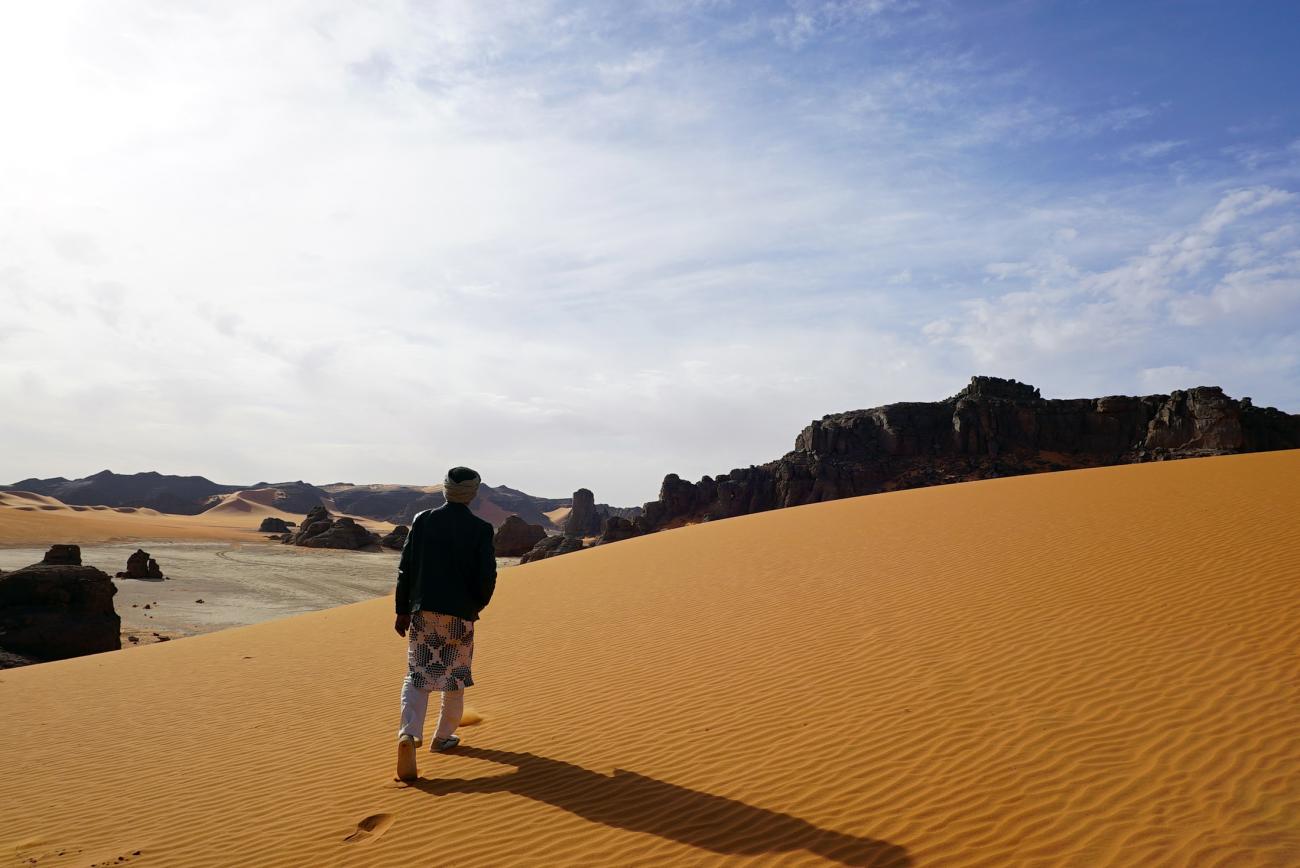
If you think that the Sahara only offers an endless sea of rolling sand dunes, think again. The scenery here took my breath away, not least because it was ever-changing. Rather than just staring across shifting dunes, the landscapes seemed to change from hour to hour, nevermind from day to day.
One moment, we were faced with miles of towering sand dunes, the next we were confronted with huge rock formations scattered across the open ground like shipwrecks at sea. Other times there was a thick salty crust, which crunched underfoot or sand that glowed a Mars-like red.
It was all incredibly photogenic yet at the same time hard to do justice with a camera, even when a line of wild camels gracefully padded across the dunes (see below). Each morning we were treated to a walk through the desert with our guide, while the rest of the crew packed up our camp. This gives you the chance to explore before it gets too hot and, naturally, you can follow this with an evening stroll in your next camp.
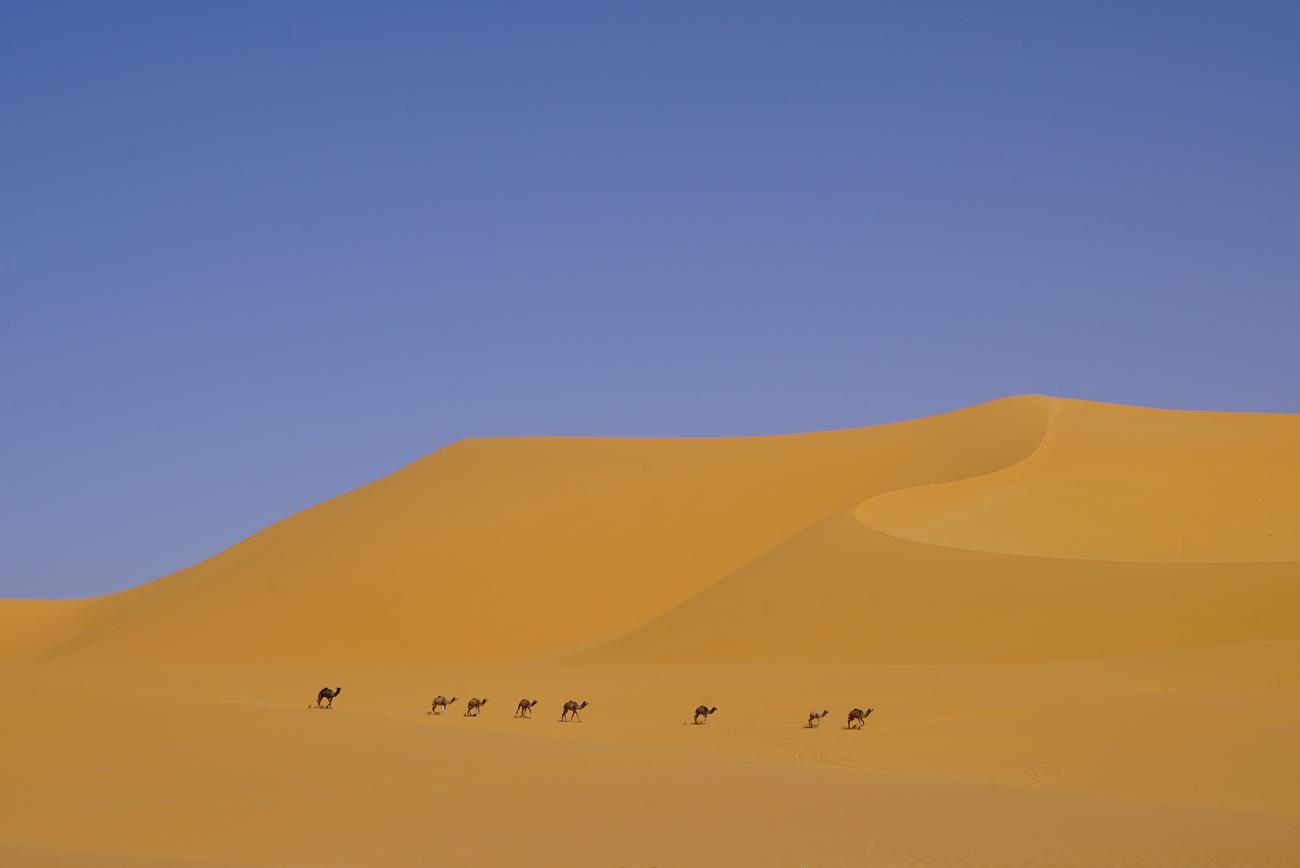
ROCK ART
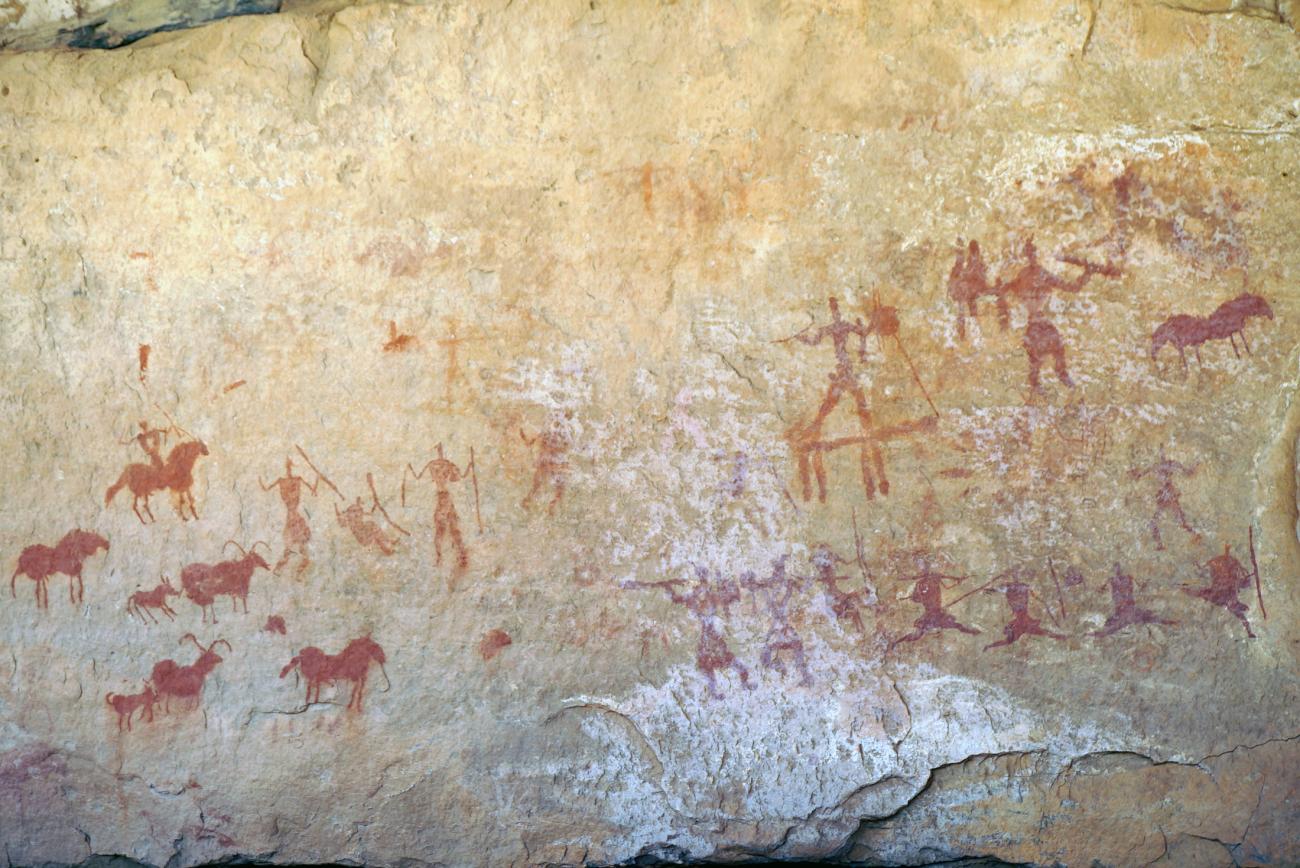
The area around Djanet is home to an estimated 15,000 pieces of rock art. Some of the examples are around 12,000 years old, and much of it depicts a time when this area was fertile, featuring giraffes, deer, elephants and even fish. There are also pictures of everyday life such as market, hunting and battle scenes. Much of this rock art shows extraordinary skill, often impressionist in style rather than realistic, and its preservation status varies from bright colours which look like they could have been painted yesterday to art that has been bleached and faded by the sun.
Looking at images of warriors on horseback, you can almost piece together the history, when the rural pastoralists faced a new threat from the horseriding Berbers of the north, who conquered them and settled into a nomadic existence, giving rise to the Tuaregs who live in this area today. This abundance of rock art gives a whole extra dimension to time spent in the desert, and the fact you almost stumble across it gives the place the feeling of a huge outdoor museum.
One particularly moving scene feels poignant right now: the story behind The Cow That Cries goes that a farmer took his cows down to a spring to drink, and upon finding it had dried up, his herd started crying. The age of this masterful engraving - around 8,000 years - does coincide with the beginning of a period of aridity in the Sahara…
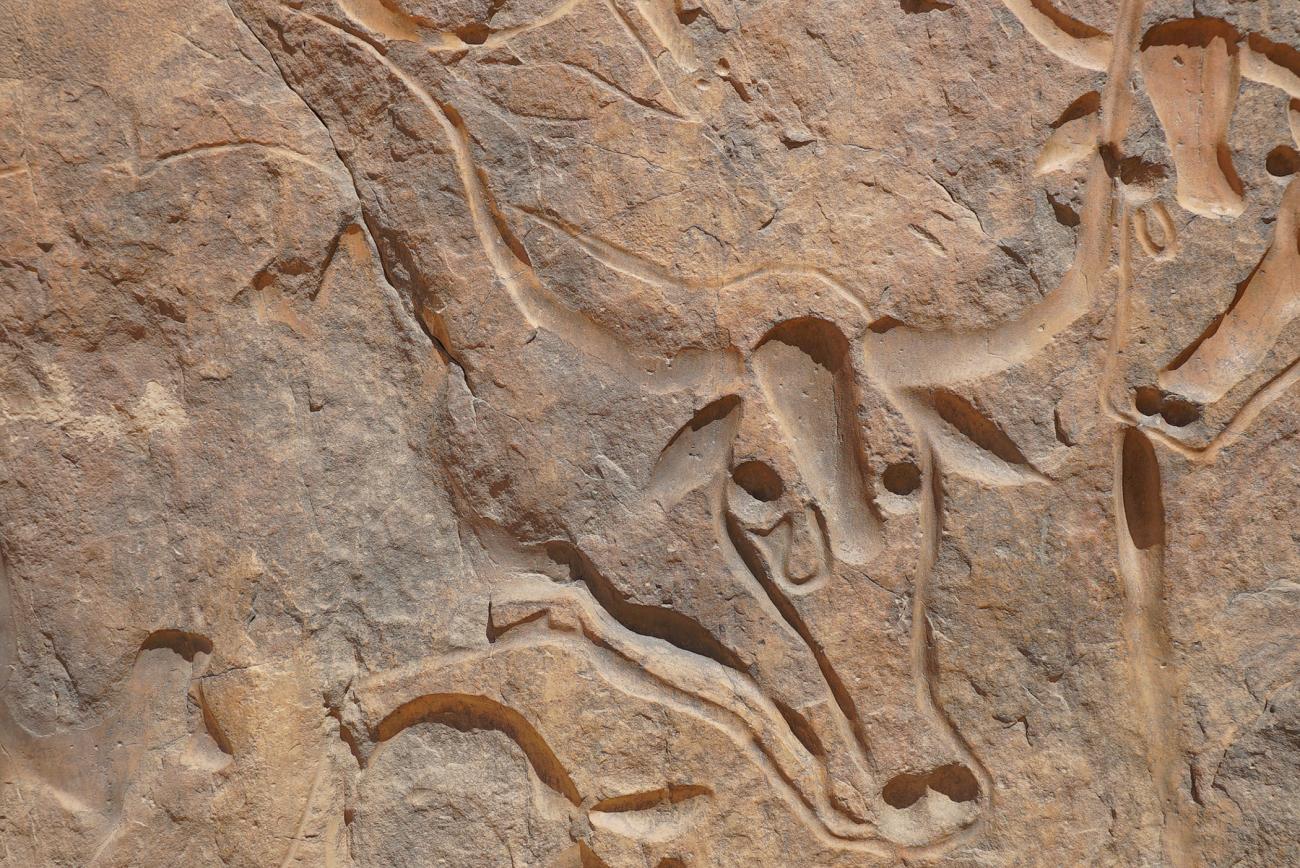
NOMADIC LIFE
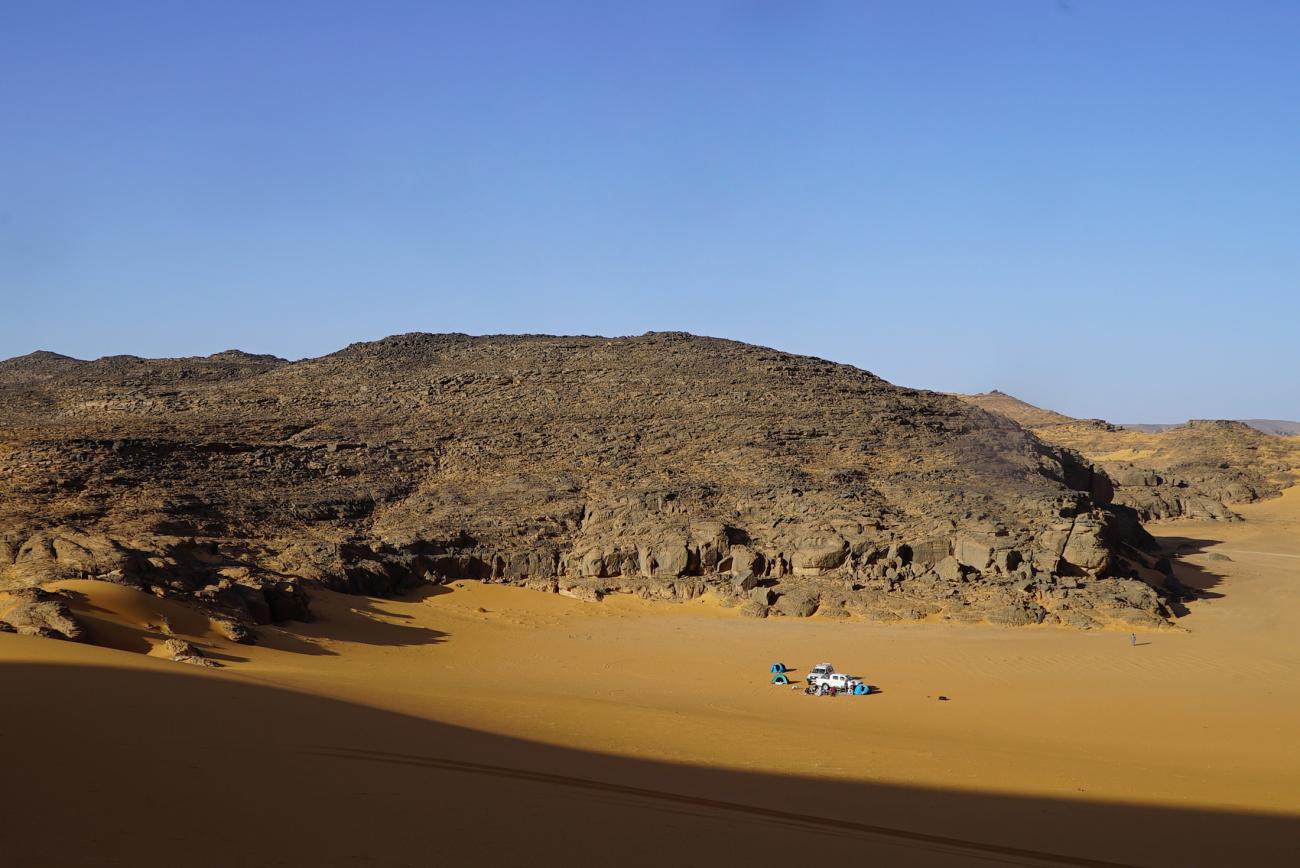
Despite my initial fears, camping in the desert is a real highlight of this trip. It can’t be described as anything other than basic; you’ll be provided with a dome tent and mattress, and it’s important to bring things like a sleeping bag and head torch, but it enables you to stay overnight in some of the most beautiful places on earth, under the clearest skies imaginable.
Each afternoon your crew will find a scenic spot to make camp, usually with no one else for miles around. After climbing a dune for sunset or just taking a walk among the scenery, you’ll return to find the camp, including a make-shift kitchen, has been set up.
Spending time with your Tuareg crew, you learn a lot about desert life: The importance of tea, for example, which is methodically brewed after every meal in an elaborate process involving two teapots and a mixture of green tea and mint leaves.
You’ll also be impressed with how the chef can rustle up a seemingly endless variety of meals in the desert, from mouthwatering salads to soups, pasta or traditional couscous with lamb, not to mention how at one with their surroundings the crew are, able to spot a good supply of acacia wood for the evening campfires at twenty paces.

SWITCHING OFF
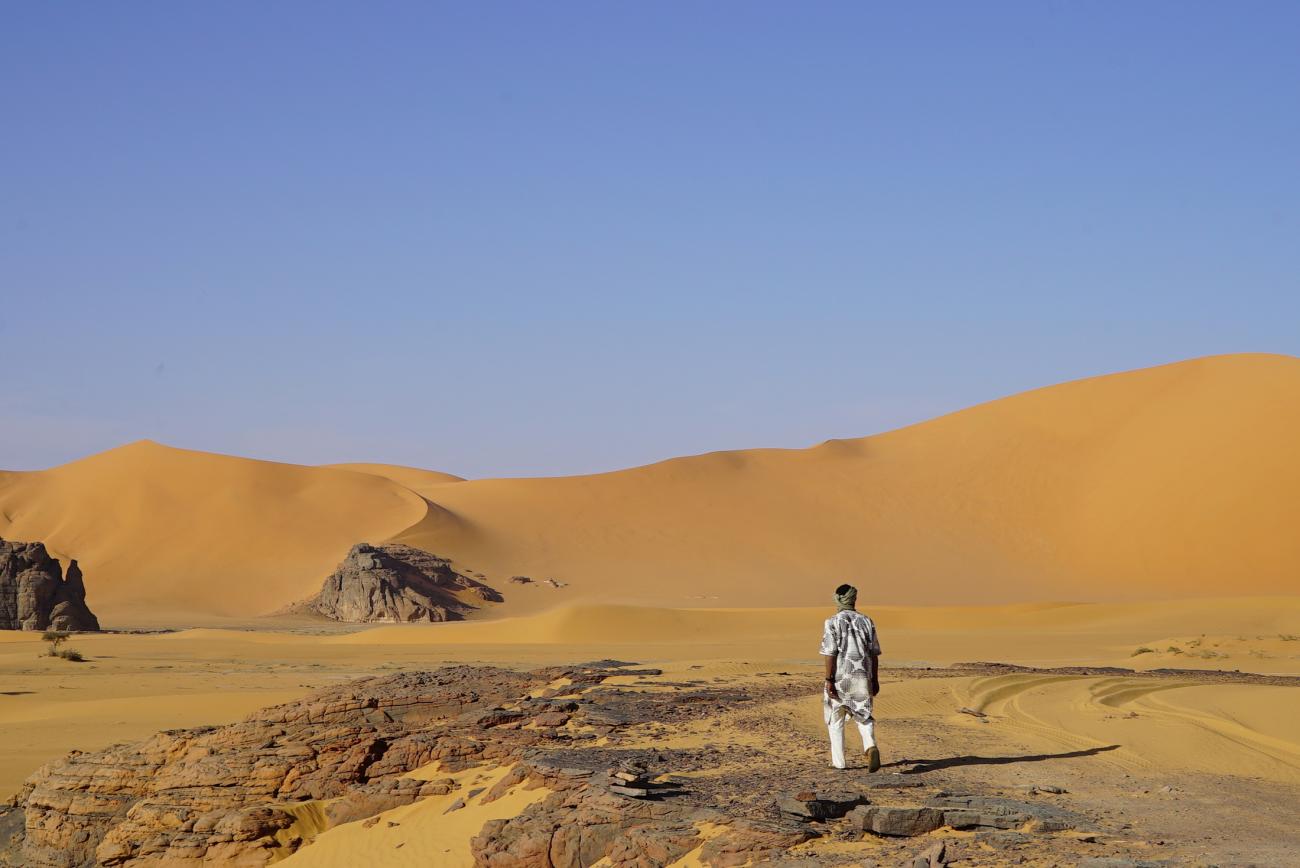
Wild Frontiers go to some pretty remote places, from the steppes of Mongolia to the mountains of Pakistan, but surprisingly few of our destinations are truly ‘off-grid’.
The Algerian Sahara is one of the most remote places we visit, and you’ll have no option but to forget about your phone and the wider world pretty much the whole time. I must admit this did cause me a little anxiety at first, but I soon grew to love not thinking about messages, the news, Twitter, or work emails, and just immersing myself in my incredible surroundings.
I was excited to get back to the small oasis town of Djanet, which feels like a modern metropolis after time in the desert, and catch up on messages from friends and family, news and football scores, but this dopamine hit was shortlived and ultimately a bit of an anti-climax, especially as my home team had lost.
Being in the desert changed me and I have vowed to keep some of the good habits I picked up: reading more, taking in the moment and being more aware of what is going on around me, more present.
